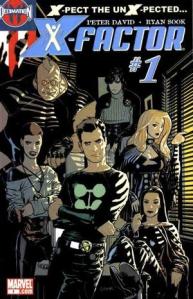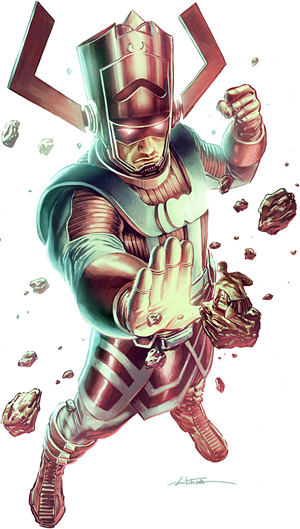 In 2006, Marvel’s Earth-616 saw a huge paradigm shift in storytelling. Mark Millar wrote a giant Marvel crossover that had been in the works for a few years, Civil War. Other major story lines like Secret War, Avengers: Disassembled, House of M, and Decimation led to building tensions between Captain America and Iron Man, two of the most popular figureheads in Marvel’s repertoire. In the last 6 years, other major events have also happened: Annihilation, Chaos War, Doomwar, Realm of Kings, Secret Invasion, Shadowland, Siege, Spider-Island, Thanos Imperative, Realm of Kings, Necrosha, and Second Coming. The list goes on, but, assuming the world doesn’t end at the end of the year, I intend to teach them to you, including all of the small side stories in between. It’s hard to really get into the nitty gritty details of every aspect of the Marvel Universe from the Timely Publications and Atlas Comics days, so I’m really only going to touch on what I know the most intimately: the last 10 years.
In 2006, Marvel’s Earth-616 saw a huge paradigm shift in storytelling. Mark Millar wrote a giant Marvel crossover that had been in the works for a few years, Civil War. Other major story lines like Secret War, Avengers: Disassembled, House of M, and Decimation led to building tensions between Captain America and Iron Man, two of the most popular figureheads in Marvel’s repertoire. In the last 6 years, other major events have also happened: Annihilation, Chaos War, Doomwar, Realm of Kings, Secret Invasion, Shadowland, Siege, Spider-Island, Thanos Imperative, Realm of Kings, Necrosha, and Second Coming. The list goes on, but, assuming the world doesn’t end at the end of the year, I intend to teach them to you, including all of the small side stories in between. It’s hard to really get into the nitty gritty details of every aspect of the Marvel Universe from the Timely Publications and Atlas Comics days, so I’m really only going to touch on what I know the most intimately: the last 10 years.
In my opinion, anyone wanting to get started in the Marvel Universe, that already has a basic knowledge of the characters and their primary mission, should start with Secret War. If you don’t know who Nick Fury or Wolverine is, you’ll want to start a little bit earlier, but assuming you know names and nothing else, this is a great beginning. You’ll then want to read Avengers: Disassembled, House of M, and Decimation. As I mentioned before, these are the main books that lead up to Civil War. Also, a new standard for consistent and powerful storytelling comes into existence during this time.

 Secret War, the beginning of my timeline, is important because Nick Fury, the Director of S.H.I.E.L.D. (Strategic Hazard Intervention Espionage Logistics Directorate) goes into hiding because of an illegal coup attempt in Latveria (where Dr. Doom is from). Fury stays underground and silent for years until the events in Secret Invasion. Avengers: Disassembled presents to readers, you, the dissolution of the Avengers team. I have come to believe that this is the first time an event like it has occurred. Heroes have left but the team has never fallen apart. Without getting into as much detail as I would in a separate article, the crisis leads into the House of M crossover. House of M describes a world reworked and rewritten by Wanda Maximoff, the Scarlett Witch (pictured on the left), who is on the brink of a nervous breakdown. House of M ends with the introduction of Layla Miller (she holds important information) and with a vast majority of the mutant population destroyed. All of the suffering leads to an event called Decimation. With 198 mutants left in the world and no X-genes anywhere to be found, the mutant population, especially the X-men, are forced to look out for each other more than ever.
Secret War, the beginning of my timeline, is important because Nick Fury, the Director of S.H.I.E.L.D. (Strategic Hazard Intervention Espionage Logistics Directorate) goes into hiding because of an illegal coup attempt in Latveria (where Dr. Doom is from). Fury stays underground and silent for years until the events in Secret Invasion. Avengers: Disassembled presents to readers, you, the dissolution of the Avengers team. I have come to believe that this is the first time an event like it has occurred. Heroes have left but the team has never fallen apart. Without getting into as much detail as I would in a separate article, the crisis leads into the House of M crossover. House of M describes a world reworked and rewritten by Wanda Maximoff, the Scarlett Witch (pictured on the left), who is on the brink of a nervous breakdown. House of M ends with the introduction of Layla Miller (she holds important information) and with a vast majority of the mutant population destroyed. All of the suffering leads to an event called Decimation. With 198 mutants left in the world and no X-genes anywhere to be found, the mutant population, especially the X-men, are forced to look out for each other more than ever.
 After thoroughly enjoying those four events, Civil War would be the next best bet for a new reader. After, any of the Marvel titles are arguably fair game. There are the classic titles like Fantastic Four, Uncanny X-men, Amazing Spiderman, and Invincible Iron Man but there are lesser known titles that warrant just as much attention: X-Factor, X-Force, Daredevil, Deadpool, Immortal Iron Fist, and Secret Warriors, just to name a few. Let’s also keep in mind that not all of these have 100’s of issues for you to read. Iron Fist ran for just 27 issues while Secret Warriors ran for just 28. Both are some of my favorite reads and I guarantee there will be “lectures” on them as well.
After thoroughly enjoying those four events, Civil War would be the next best bet for a new reader. After, any of the Marvel titles are arguably fair game. There are the classic titles like Fantastic Four, Uncanny X-men, Amazing Spiderman, and Invincible Iron Man but there are lesser known titles that warrant just as much attention: X-Factor, X-Force, Daredevil, Deadpool, Immortal Iron Fist, and Secret Warriors, just to name a few. Let’s also keep in mind that not all of these have 100’s of issues for you to read. Iron Fist ran for just 27 issues while Secret Warriors ran for just 28. Both are some of my favorite reads and I guarantee there will be “lectures” on them as well.
The Marvel Universe is indeed a universe. Sometimes we, as readers, forget that confirmed alien species exist within it and their own conflicts won’t always center on Earth. In the past we’ve been introduced to the Kree, Skrull, Brood, and Phalanx, amongst others. On top of the alien species, there are holy deities from every religion inhabiting Earth. Most popular are the Norse, you know them as Thor, Loki, and Odin. Universal “functions” and constants also exist that help to keep the entire universe in balance. Beings like Galactus (The World Eater), Tenebrous, the Phoenix Force, and the Celestials help to ensure cosmic order unless the “Abstract Concepts” get involved. The abstracts are physical representations of, well, concepts. Death, Eternity, and Infinity are all “characters” in the Marvel Universe that play a role in everything that is.
 As you can tell by this thorough and somewhat complex introduction, the Marvel Universe is a vast, vast place. As I continue to indulge my passion and your interest about different titles and crossovers, I hope that you will begin to slowly fall in as much love with Marvel as I have.
As you can tell by this thorough and somewhat complex introduction, the Marvel Universe is a vast, vast place. As I continue to indulge my passion and your interest about different titles and crossovers, I hope that you will begin to slowly fall in as much love with Marvel as I have.
Happy reading,
Will
